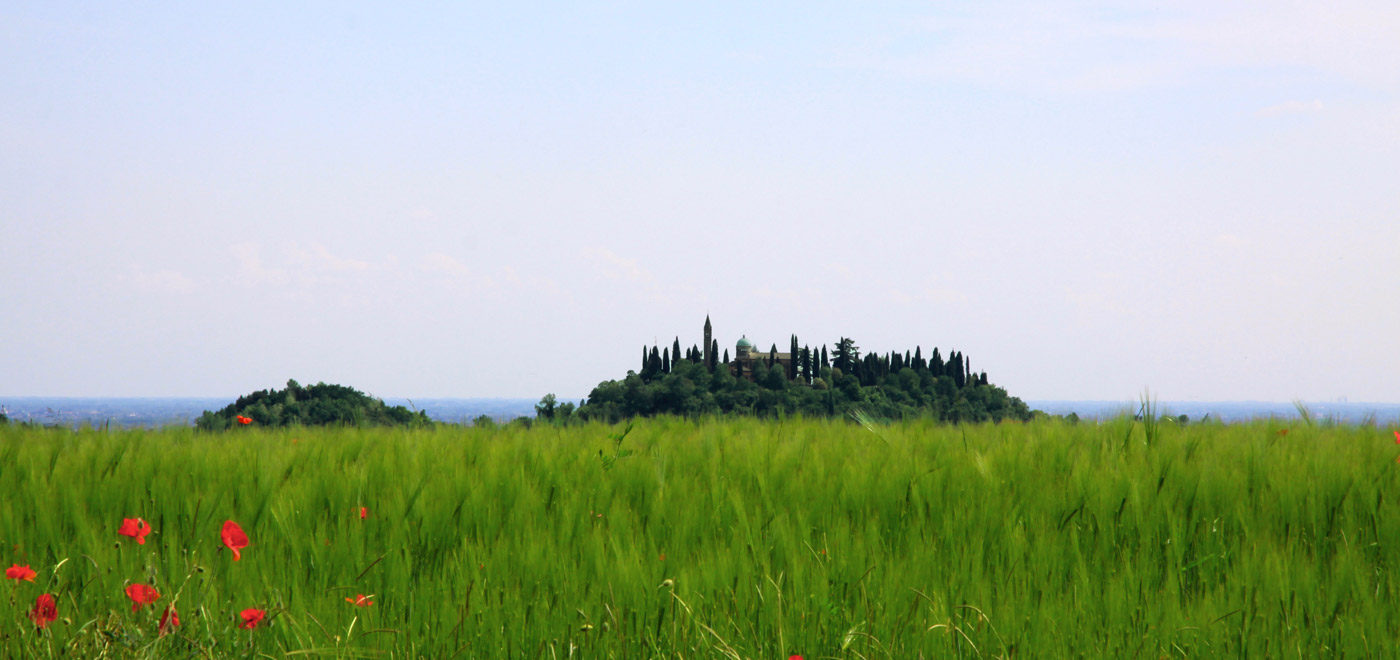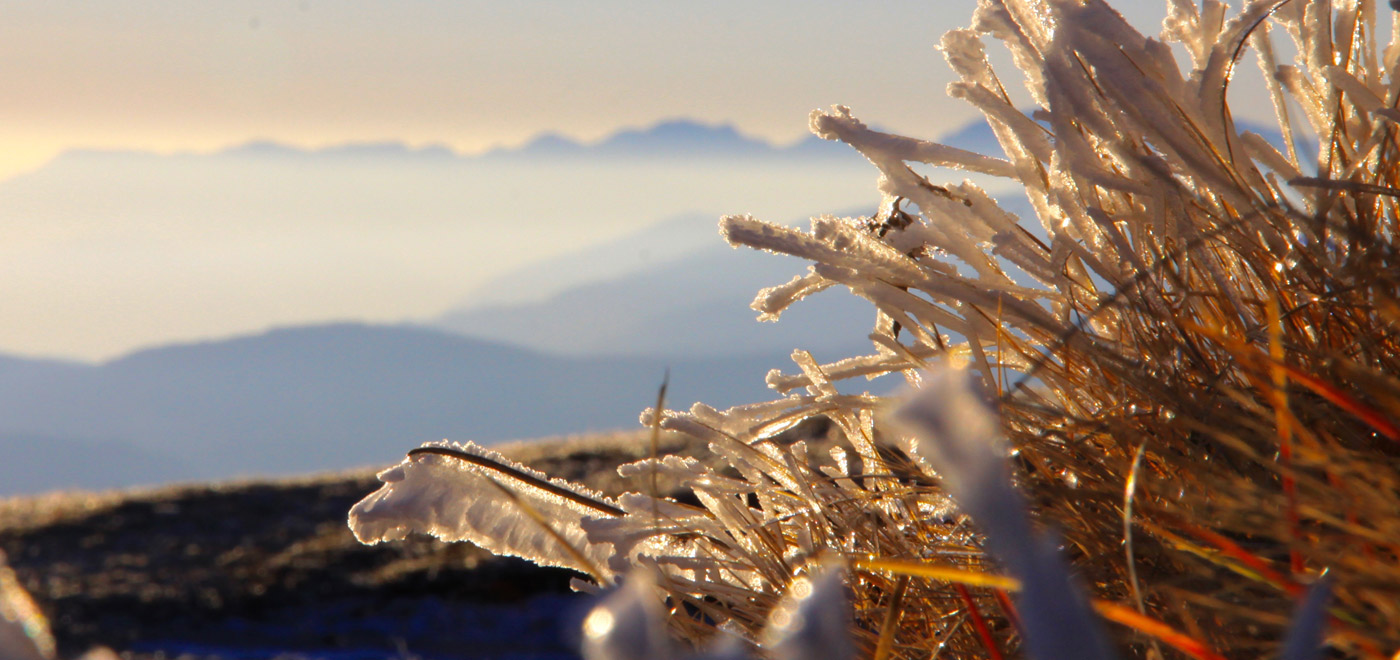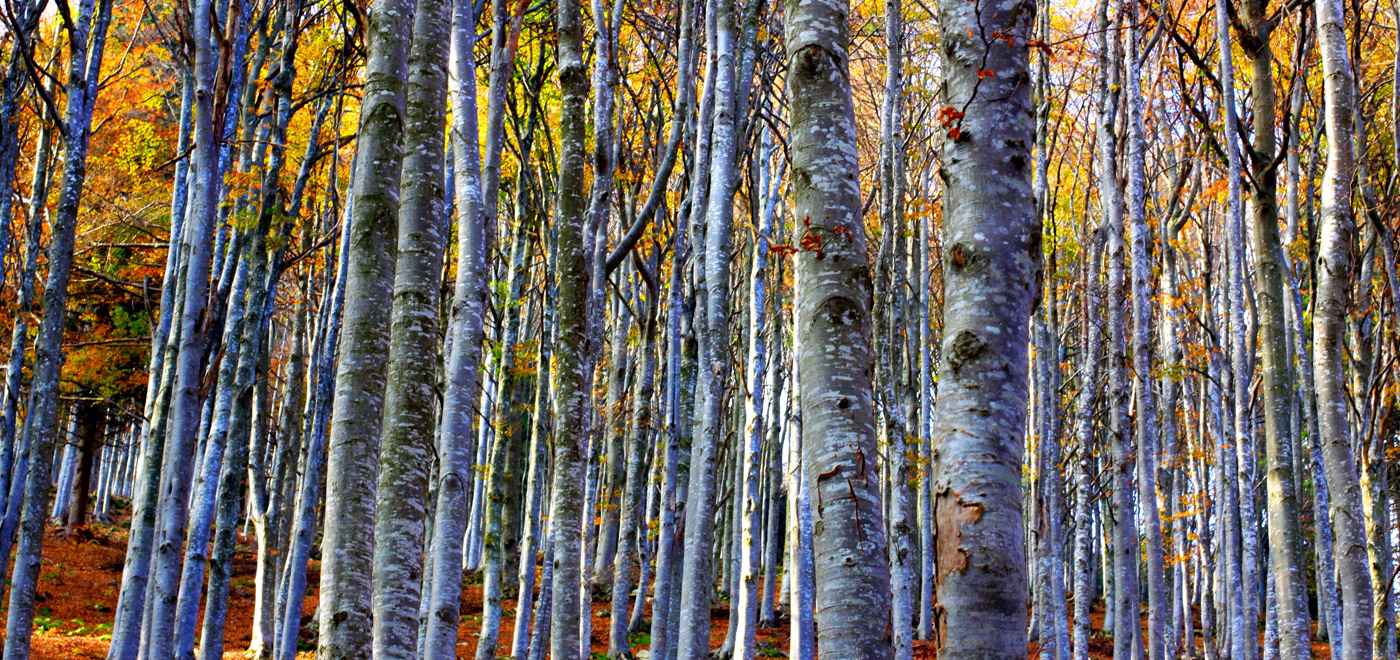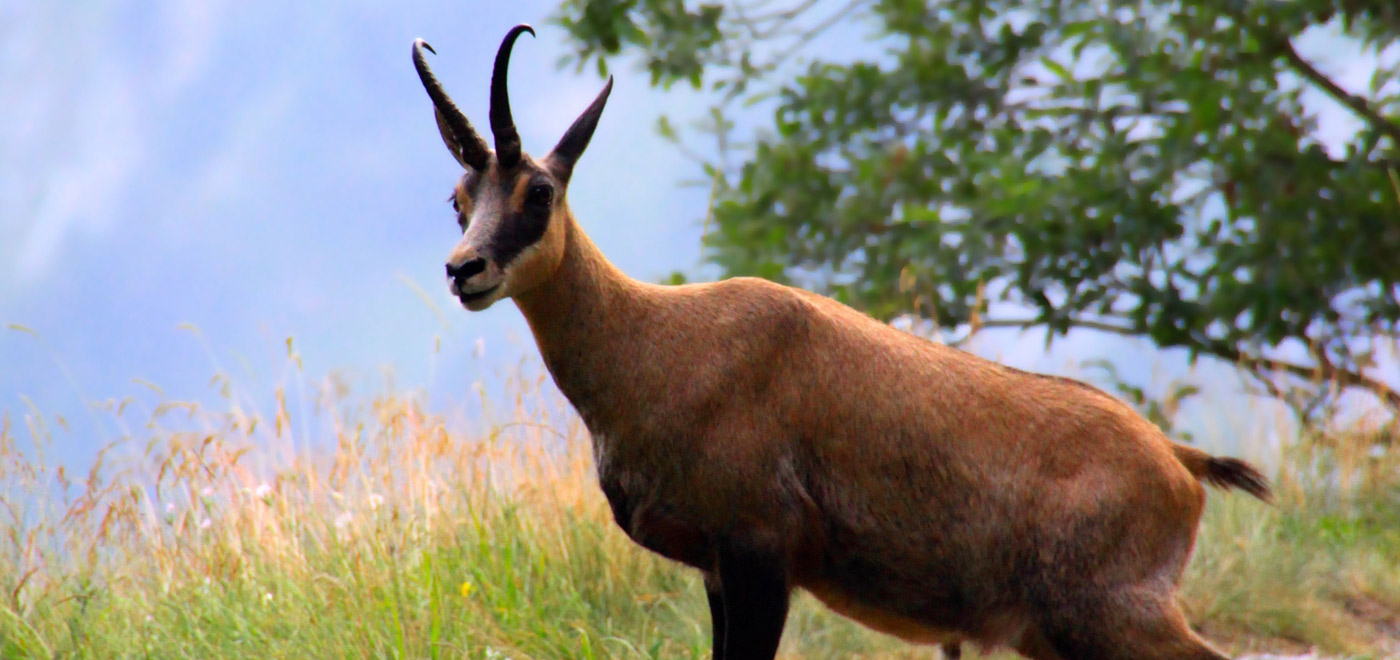Grappa’s Massif between flora, fauna and land morphology
Grappa’s Massif is located on the Prealpi strip. It overlooks the vast Veneto Plain and is bordered by the valleys of Brenta and Piave rivers, West and East respectively. Descending, its steep slopes become smoother, covered with forests and pastures. The climate of its foothills is milder and sweeter than the higher plains, characterized by scarce precipitation and the almost total lack of fog. The flora and fauna are varied and include the presence of rare endemic varieties.
-
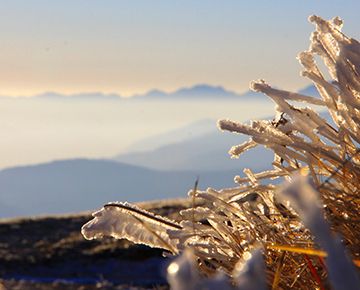
The Territory
The Territory
The Monte Grappa is a chalky massif overlooking the Venetian plains, bordered by deep and sharp valleys and divided between the provinces of Treviso, Vicenza and Belluno. The origin of the name is unsure: we know that in the past it was called “Alpe Madre”. Clearly visible from the surrounding mountains, with its 1775 meters, it has a varied form, rich in contrasts. It alternates gentle slopes descending towards north and steep slopes facing south, while flat areas are flanked by emerging rocky areas. The Grappa massif was formed by a fold of fault that lifted layers of dolomitized limestone, Biancone and Scaglia Rossa. A peculiar characteristic of Monte Grappa is the scarcity of water. If, on one side, the karst system of the massif prevents on its surface the formation of watercourse, to the other side it creates a series of cracks and crevices in which the water flows into the mountains and then resurfaces in the valley in lush streams and springs.
-
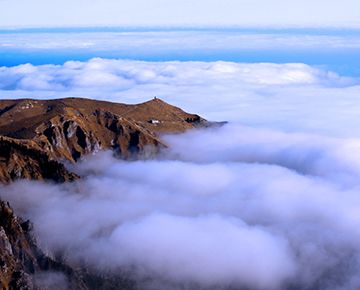
Geology and Morphology
Geology and Morphology
The rocks emerging from the territory of Borso del Grappa tell a history of 200 million of years. If we imagine removing the ground, we could see its geological structure, with mountains and hills generated by rock formations of marine origins, while the foothills area and country have been formed by sediments of continental origin. We could also observe the significant deformation that the rocky stratums suffered. There are faults, shifts and structures that testify how original marine sediments, after their cementing, crushed and were lifted during the formation of the alpine range.
In the mountain, the main types of rocks are:
Gray Limestones: the oldest formation, partially dolomitized, which constitutes the most part of the massif and emerges in crag-slopes in the deep valleys incisions, poor of fossils; its chalky constitution caused a widespread karts phenomenon, allowing the recent discoveries of caves rich in stalactites, deep wells and tunnels;
Red Ammonite: of chalky nature, rich in not well-preserved fossils, of modest thickness, it gives life to the wonderful “stone cities” in Poise and Meda valleys;
Biancone: of chalky nature, made of thin stratums, can be found at Cima Grappa, upon all the rounded tops of the mountain, and above the built-up area of Semonzo and Borso;
Red Scale (Scaglia Rossa): a clayey lime that emerges from Appocastello towards Sant'Andrea.
-
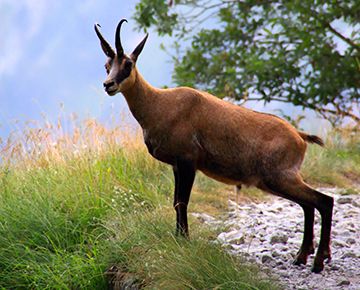
Fauna
Fauna
Often, during a walk, we do not notice the presence of animals, but a closer look shows us deer footprints, nut shells left by the squirrels, holes in the bark of trees made by laborious woodpeckers. The best time to spot animals is at dawn and sunset. In these moments, you can see chamois between the rocks of Meatte, the shy mouflon in remote valleys and groups of deer in the wood. It is not rare to come across small mammals such as foxes, martens, weasels, polecats, dormice or hares. Up in the sky you can observe the flight of various types of birds and rapacious such as buzzards, falcons, hawks, ravens, kestrels and owls at night. In pools of water used by cows we can find the kingdom of salamanders, toads, common toads and red frogs. Finally, small reptiles such as the harmless slow-worm, the water snake, the rat snake and the common viper, which requires the man to be very careful with.
-
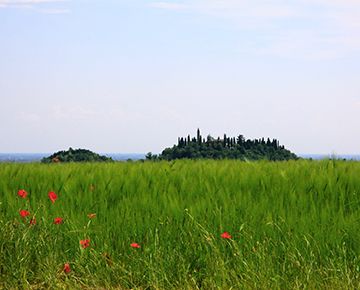
Flora
Flora
Apparently poor of flowers, the Monte Grappa reveals itself as a real paradise for flower lovers. There are, in fact, about 1400 different species: a quarter of the national heritage. There are several reasons for this rich variety. First, the ideal location situated between the influences of alpine and temperate climate. Second, the karts nature that favored the development of some rare and endemic species (that live only in certain restricted areas). Third, the richness of contrasting landscapes such as meadows and rocks. This combination of factors has created a natural habitat for shrubs typical of the Mediterranean, both coniferous from the alpine areas, as well as species resistant to thermal shock.
A walk during springtime will be an opportunity to see daffodils, lilies, crocuses, gentianellas and discover unique flowers such as Pimpernel (Primula Spectabilis) at east, or Carnia spurge (Euphorbia Kerner) in western areas , or Lilium carniolicum, just to name a few.
Very interesting are the so-called Illyrian species which find here their maximum distribution center, including the rare Centaurea Rupestris, the Genista Sericea, the Seseli Gouanii, the Cytisus Pseudoprocumbens and others.
In autumn, you can find crocuses (Colchium Autumnale), gentians (Asclepiade), lilacs.
-
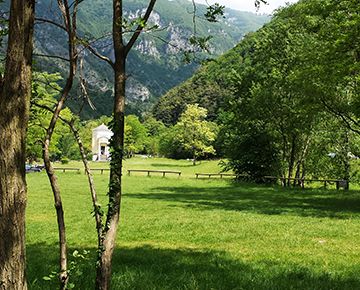
Valle Santa Felicità
Valle Santa Felicità
Important historic and nature site at the foot of Monte Grappa
Where it is: It is situated on the westside of Semonzo, between the Municipality of Borso del Grappa and Romano d'Ezzelino.
Geomorphology: The origin of the valley is due to the action of glaciers and erosion of wild waters. It is a deep gorge with steep and rocky walls, in contrast with the white torrential gravel beds. The place inspires fascination and mystery.
History and curiosities: The valley can be reached following an uneven and dusty road. It begins at the edge of the woods: here is a church dedicated to Santa Felicita, an old oven and a farmhouse that was once a hospice for pilgrims. Further on, going north into the valley, there is a shrine built in 1922, which has incorporated an antecedent, smaller roadside altar. At the shrine, dedicated to the Madonna del Buon Consiglio, during summer religious functions are held. Its story is linked to a Benedictine female monastery founded here in 1055 and characterized by a strict cloistered life. It was later occupied, towards the end of the fourteenth century, by hermits of the congregation of St. Jerome. A flood in 1636 destroyed the monastery and the water fury, crossing Semonzo, led until Mussolente the icon of the Virgin Mary. This seems to be the fact from which the cult of Madonna of the Water comes from. The current church, built in 1756, stands on the ruins of the previous building badly damaged by the earthquake of Santa Costanza on February 25, 1695. Local legends and stories tell about the incursions of the ghost Ezzelino III da Romano, the ruthless ruler of these and many other Venetian lands in the thirteenth century, which infested the valley riding and trailing chains. During the First World War the valley was used as a way of access to Cima Grappa and as a strategic place where to store troops supplies. A powder keg, a cable car and an hydroelectric pump were built and used to bring supplies to the top of the mountain. Today, you can still see the remains of those structures.
Today: Nowadays, the valley is well known among free-climbers because of a popular rock face with a wide range of difficulties. It is also the starting point of many CAI (Italian Alpine Club) paths leading to different locations of the Monte Grappa massif. In 2011, it was also the starting point of the first edition of a non-competitive foot race called the 'Trail of Heroes' with participants arriving from all over Italy. The path is 46 km long with a rise of 2900 m.
-
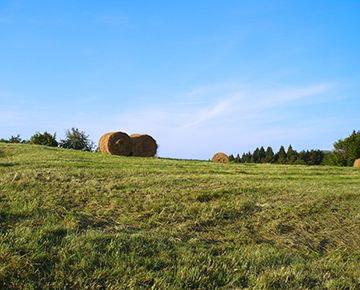
Climate
Climate
The foothills of the Grappa are protected by the alpine barrier that defend them from the cold north winds. However, the local movements of the atmosphere change every day following a regular scheme: the mountain breezes that blow in the morning hours from the top towards the valley are regularly replaced by the valley breezes, which blow from the late morning going up again through the valley furrows. The dry air has an alpine character; during the Summer the temperature usually does not go above 30 ° C and in winter does not drop below 0 ° C. Snow is not frequent and fog is rare. An important element is the cloudiness: throughout the year, the area usually escapes the clouds and the sky enjoys long periods of serenity. A curiosity: Borso del Grappa was told by Vittor Luigi Paladini, in a publication of 1919, the village with the most mild and favorable climate in the area.

